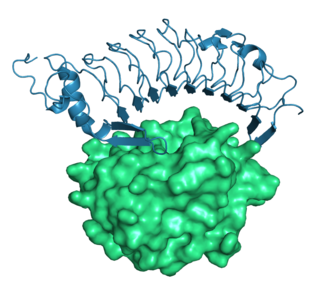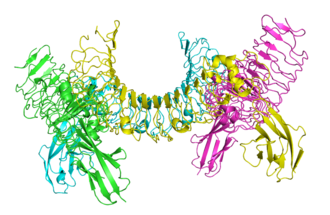User:Wayne Decatur/Sandbox RefErrorReDo
From Proteopedia
<iframe width=750 height=500 frameborder=”0” seamless=”seamless” scrolling=”no” src=”https://plot.ly/~wayne461/42.embed”> </iframe> <iframe id="igraph" src="https://plot.ly/~wayne461/42/800/600/" width="800" height="600" seamless="seamless" scrolling="no"></iframe>
<a href="https://plot.ly/~wayne461/42/" target="_blank" title="File Size Distribution of all 121240 Protein Data Bank Entries<br>as of Aug 10, 2016" style="display: block; text-align: center;"><img src="" alt="File Size Distribution of all 121240 Protein Data Bank Entries<br>as of Aug 10, 2016" style="max-width: 100%;width: 600px;" width="600" onerror="this.onerror=null;this.src='https://plot.ly/404.png';" /></a> <script data-plotly="wayne461:42" src="https://plot.ly/embed.js" async></script>
The proteins are a large family .[1]
| |||||||||||
| |||||||||||
<slideshow sequence="random" transition="fade" align="left" refresh="4500">

The human leucine-rich repeat family member Glycoprotein Ib alpha involved in Willebrand disease bound to the von Willebrand Factor A1 Domain 1m10

Lingo-1 protein involved in inhibiting effective regrowth of axons after central nervous system damage 2id5
</slideshow>
Articles in Proteopedia concerning Leucine-rich repeat proteins include:
- Human Follicle Stimulating Hormone Complexed with its Receptor
- Variable Lymphocyte Receptors
- Lamprey Variable Lymphocyte Receptor
- Toll-like receptors (TLRs)
- Complex of Glycoprotein Ib alpha and the von Willebrand Factor A1 Domain
- Lingo-1 protein involved in inhibiting effective regrowth of axons after central nervous system damage
| |||||||||||
| |||||||||||
To view automatically seeded indices concerning Leucine-rich repeat proteins, see:
- Leucine-rich repeat
- Leucine-rich-repeat
- Leucine-rich repeat-containing protein 4
- LRR
- Leucine-rich repeat glycoprotein
References
- ↑ Matsushima N, Miyashita H, Mikami T, Kuroki Y. A nested leucine rich repeat (LRR) domain: the precursor of LRRs is a ten or eleven residue motif. BMC Microbiol. 2010 Sep 9;10:235. PMID:20825685 doi:10.1186/1471-2180-10-235
See it working when I add an additional reference below side show at Leucine-rich repeat
